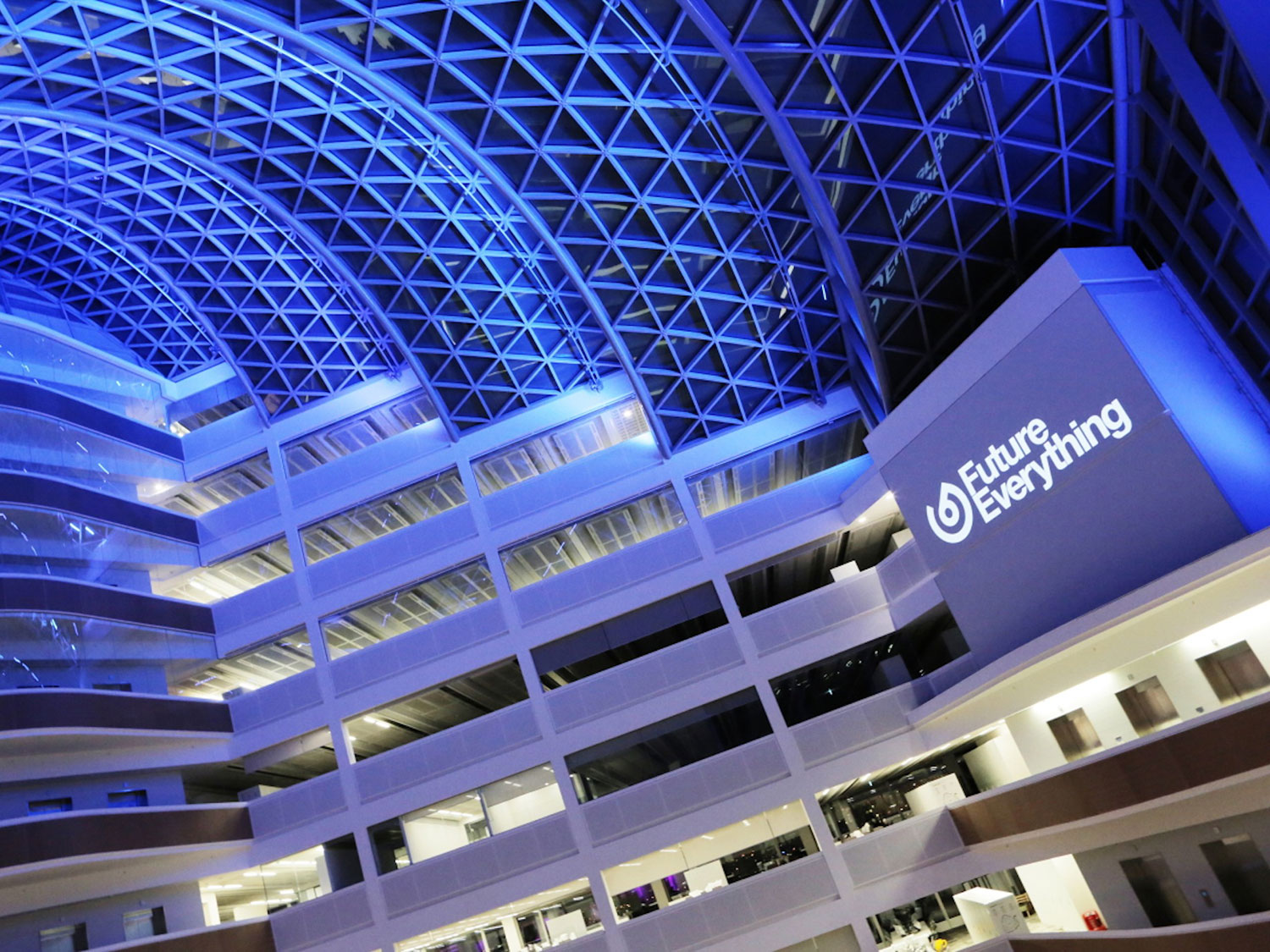Notes from FutureEverything: the Data Dimension
Data artists share spectacular work at the influential festival of digital culture in Manchester.

There was also a major exhibition of data art called The Data Dimension, on until May 22 at Four Piccadilly Place. Given our next Future Human event, Instant Art, will be in part a look at the rise of artwork that uses data, interconnection and modern digital habits as its subject matter and medium, I thought I’d look at the work FutureEverything selected.
It’s an exhibition that shows artists cleaving a new space for artwork, that’s less about pure concept, aesthetic or object, and more to do with pragmatism, education and storytelling. Many of the works are interactive, and feel like they’re caught somewhere between the White Cube and the Science Museum. The art snob in me was harrumphing from time to time; could this really be called art? Is art that invites play not ‘serious’? Or is it the art market that demands art be static and handed down from an elevated plain of vision and skill? There’s no doubt that singular, non-interactive art objects will continue to be made (and coveted), but the data art world is a refreshingly open-minded, often big-hearted new sideshow in the art world.
In Nadeem Haidary’s Food of Art, nutritional information labels are placed in the corners of Old Masters’ paintings, pertaining to the food they depict; this is data art at its worst, a cheap and unfunny gag. Meanwhile Marcos Lutyens’ FlavourCollider, in which an EEG headset monitors brain activity as the wearer drinks an Absolut vodka cocktail, and converts it into colourful Biba-ish patterns, is merely an elegant piece of advertising. But Nicolas Feltron‘s Annual Reports (pictured above), beautifully produced booklets of infographics collated from data the graphic designer has collected from his daily life, are arguably more challenging. The data, full of the craft beers, faddish food and tastefully challenging music Feltron likes, is full of the comfortable banality of an affluent New Yorker: is Feltron just a grating and smug creative showing off his ever-so-trendy existence, or is he, by using the coldness of data, satirising his own cold life?
There were other compelling works, but the most successful of all was one which required no reading up of the programme notes to understand what was going on. Kimchi and Chips’ Lit Tree is a live tree planted in darkened room; a projector linked to a Microsoft Kinect camera blurts forth fragmented light patterns onto it. By passing your hand over a lit pillar beneath the camera, you can sculpt the light yourself; leave it alone and an apparently random sequence of projections starts up. The effect is beautiful, but also thought-provoking, especially in the context of a data exhibition – it reminds us how our concepts of digital networks visually correspond to the natural world, of branches, veins and trees, and how we seek to mimic nature in attempting to create anything from an intuitive user interface to a microchip board. Ultimately, links to the analogue world are needed; the very existence of physical events like FutureEverything proves that.
We’ll continue to consider the world of data art, and how digital culture is affecting both art practice and the art market, at our next event on July 13 – tickets are available here. In the meantime, if you’re in Manchester in the coming week check out The Data Dimension for a glimpse into a new, egalitarian, and truly modern school of artistic expression.

Share
Tweet this Share on Facebook